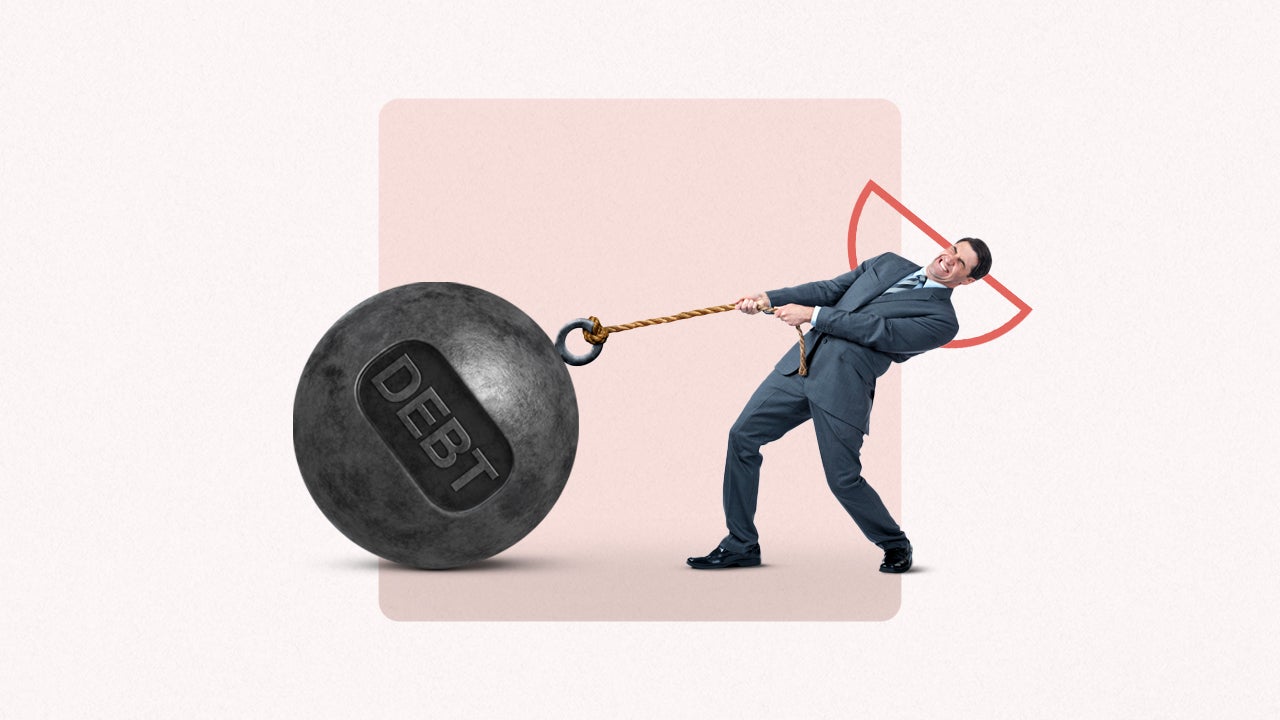The best ways to borrow money

Key takeaways
- Banks, credit unions and online lenders are top ways to borrow due to their competitive interest rates and quick turnaround.
- Lenders may offer both secured and unsecured options, but the collateral you can provide depends on the type of loan.
- Avoid high interest rates by comparing at least three lenders and double-checking the borrowing option you picked to ensure it meets your needs.
Look for low interest rates, limited fees and payment flexibility to score the best deal on a loan. By knowing how to borrow money responsibly and identifying both good loans and what traps to avoid, you can find the best ways to borrow money.
Personal loans, lines of credit and credit cards are all viable options, but there are plenty out there to choose from. Compare your options to find one that fits your budget and is able to fund you at the lowest rate you qualify for.
9 ways to borrow money
There are a variety of options available if you need to borrow money. Personal loans, credit cards and lines of credit are typically easier for anyone to qualify for. Other ways to borrow money, like a 401(k) loan or through a public agency, may require you to meet specific eligibility requirements.
Bank or credit union personal loan
Banks and credit unions are two types of financial institutions that offer personal loans. While banks are for-profit institutions, credit unions are not-for-profit institutions. This typically means that credit unions invest their profit back into benefits for members like better rates and lower costs for services.
Both banks and credit unions typically cater to those with good credit scores — a FICO score of 670 or higher. Since credit unions are not-for-profit, they usually offer the best rates, but if you aren’t already a member, you may need to pay a fee to become one.
Larger banks and federal credit unions often have online applications for personal loans. Local banks and credit unions, however, may require you to apply in person at your local branch.

Pros
- In-person support
- Straightforward application process

Cons
- Checking or savings account may be required
- May require a higher credit score
Online personal loan
Online lenders don’t have physical branches, which makes them one of the quickest options when you need to borrow money. It typically only takes a few minutes to apply, and customer service representatives are usually available via phone or chat to answer any questions.
When you apply for a personal loan with an online lender, it’s easy to shop for different lenders quickly and find the best rates. There are typically more options for people with bad credit scores than with other types of lenders. Some even cater to credit scores as low as 560 — though you’ll really need to shop around to find the best bad credit loan rates.

Pros
- Quick and easy to apply
- Options for lower credit scores

Cons
- No in-person customer service
- More rigid rates and terms than traditional lenders
0% APR credit card
Some credit cards, known as 0 percent APR credit cards, offer introductory periods with no interest accrual. The introductory period usually lasts anywhere from six to 21 months, which means you can spend within your credit limit without paying interest.
This can be one of the cheapest ways to borrow money, but it’s not the best way to borrow money for everyone. If you don’t have a plan to pay off your credit card within the introductory period, you may be faced with a hefty interest rate after the period ends.
It’s a huge risk to borrow money this way if you don’t know how you will pay it off. It is also difficult to qualify for a credit card with a 0 percent interest rate. There are other low-interest credit cards you may want to consider if you aren’t able to qualify for a zero percent APR card.

Pros
- No interest paid during the introductory period
- Allows for greater spending flexibility

Cons
- Missed payments could forfeit the introductory period
- Usually difficult to qualify
- May have high interest rates beyond the introductory period
Peer-to-peer lending
Peer-to-peer (P2P) lending is a way to connect individual lenders with individual borrowers. P2P lenders like Prosper facilitate loans and act as an alternative to a traditional bank loan. These types of lenders operate online, similar to online lenders, and the application process can typically be completed in just a few minutes.
P2P loans may have more options for borrowers, and some will approve loans to those with lower credit scores. While traditional banks require a credit score of at least 670, P2P lenders often have a minimum credit score well below that.
However, P2P loans are more expensive. They often have more fees than banks — or even online personal loans. In addition to a higher interest rate, expect origination fees and administrative fees that reduce the total amount you are able to borrow.

Pros
- More options for lower credit scores
- Quick online application

Cons
- No in-person customer service
- Not legal in every state
- Potential for high fees and slow turnaround
Personal line of credit
A personal line of credit is often unsecured and works similar to a credit card. You can draw up to a predetermined maximum and pay back what you borrow with interest. As you repay, you are able to borrow again up to your credit limit. Unlike credit cards, lines of credit often have interest rates closer to those of a personal loan.
Banks and credit unions typically approve personal lines of credit for those who already have a checking account. Online lenders may offer them, but it is less common.
A personal line of credit isn’t a great long-term borrowing plan because you can only continue borrowing during the draw period, which typically lasts two years. After, your line of credit will enter a repayment period similar to a personal loan.

Pros
- A credit line can be reused as it is paid off
- Interest due only on borrowed amount

Cons
- Fees may apply in addition to interest
- High credit score typically required
Buy now, pay later
The buy now, pay later (BNPL) model allows you to finance your purchase and pay it back in set installments. Companies like Affirm and Klarna partner with thousands of retailers to offer you the option to buy something now and pay it back on your terms. You make a small down payment, usually 25 percent of the full price, and pay the rest back over time — usually every other week.
Many BNPL services have additional installment loan options that charge interest on your purchase, so it’s important that you understand the terms of your agreement. Interest rates on longer repayment plans can be higher than other loan types, making them an expensive choice if you aren’t able to repay quickly.
BNPL products also aren’t without their problems. According to a Bankrate survey, 56 percent of users have experienced an issue when using a buy now, pay later service — including overspending and missing payments.

Pros
- Can skip interest if paid off in four installments
- No late or hidden fees
- No impact on credit score with timely payments

Cons
- Often limited to partner retailers only
- Interest rates range as high as 15 percent
401(k) loan
A 401(k) loan allows you to borrow from your retirement savings account. Unlike a 401(k) withdrawal, there is no penalty for taking a loan out from your account — and the interest you pay on the loan goes back into your retirement account.
Each retirement plan has slightly different rules for 401(k) loans, though they may allow you to borrow up to 50 percent of your savings. You typically have to pay back the loan within five years, and depending on your plan, you may only be able to take out a loan a certain number of times.

Pros
- Interest paid goes back into your account
- No withdrawal penalty

Cons
- Sacrifices potential growth during loan term
- Faster repayment required if you leave your job
Margin account
A margin account is a brokerage account where the broker-dealer lends cash to the investor using the account as collateral. It can also be used for a loan to cover non-investment costs over a short period of time. Regardless of how you use your margin account, you will have to pay interest on the amount you borrow.
Borrowing on margin can result in a gain if the securities invested increase in value, but it can also result in greater debt if they decrease in value. For example, let’s say you invest $25 and the broker lends you $25 to invest a total of $50. If the price of the stock goes up from $50 to $60, you gain $10, meaning you now only owe $15. But if the price of the stock goes down to $40, you owe a total of $35.

Pros
- Lower rates compared to other borrowing options
- No additional fees to pay

Cons
- Interest rates may change
- Potential for increased debt if value of securities drops
Public agencies
Public agencies, such as the government or nonprofits, typically have programs and loans to help out during financial emergencies. The exact programs available will depend on where you live. You can contact your local government or look to national government agencies to find loans based on your needs.
Borrowing from public agencies typically has much more specific requirements, but this type of loan also usually has better terms and low interest rates. Some loans may even have 0 percent interest rates. While applying for any public or nonprofit funding can be a lengthy process, it is often one of the best ways to avoid high fees and interest rates.

Pros
- Typically have low or no interest rates
- May not check your credit history

Cons
- Income or residence requirements may apply
- In-depth application process
Bottom line
If you are looking for the least expensive option to borrow money, you should prequalify for a variety of these options and see which offers the best rates. Consider your reason for borrowing money and shop around with different lenders and types of loans to compare the best options. It may be time consuming, but in the end, it can help you find the right option for your budget.
Frequently asked questions
You may also like

How much can I take out in student loans?

How debt consolidation loans work




